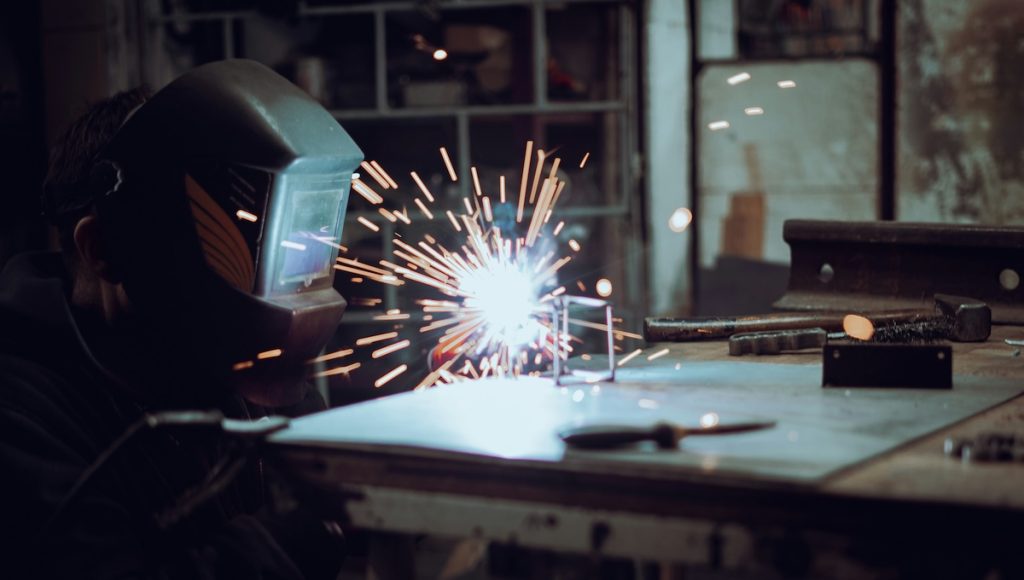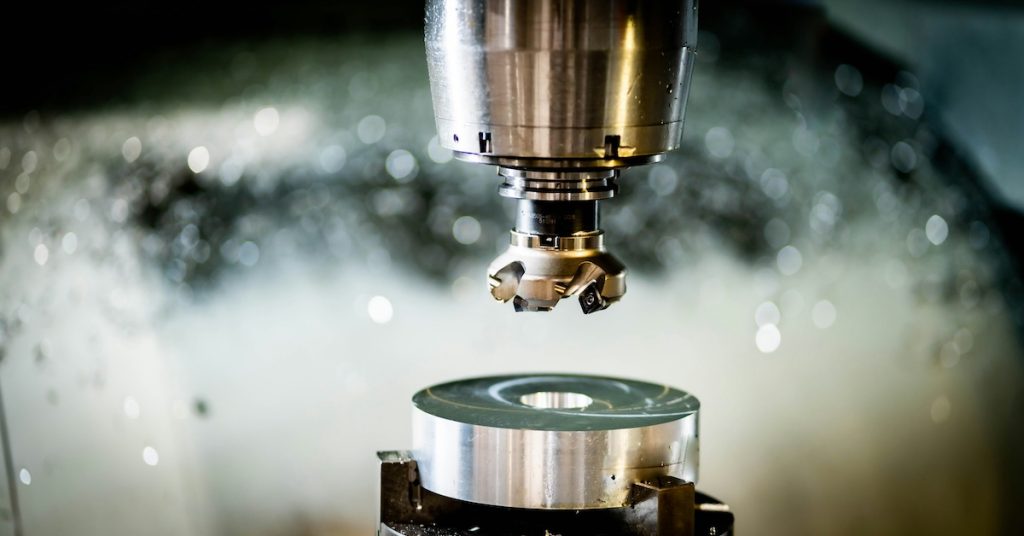From smartphones and electric vehicles to aerospace systems and medical devices, semiconductors power nearly every piece of modern technology. These tiny chips, often smaller than a fingernail, enable high-speed computing, data processing, and intelligent automation. But behind each chip lies an incredibly complex, precision-driven process: semiconductor manufacturing.
At Eagle Metalcraft, we understand the critical role high-performance components play in this field. As a trusted partner to companies across the electronics and semiconductor supply chain, we support this fast-moving industry with precision sheet metal parts, CNC-machined enclosures, cleanroom-ready components, and more.
What Are Semiconductors?
Semiconductors are materials with electrical conductivity between that of conductors and insulators. Silicon is the most commonly used, though materials like gallium arsenide and silicon carbide are also used in high-performance applications.
When engineered into chips, semiconductors can control electrical signals, store data, and execute complex instructions. These microdevices form the heart of everything from smartphones to satellites.
Key Steps in the Semiconductor Manufacturing Process
The path from raw silicon to finished chip is intricate and exacting. Below are the core stages of semiconductor manufacturing.
Wafer Fabrication
Semiconductor devices begin as thin silicon wafers, sliced from purified crystal ingots. These wafers are polished to a mirror finish and prepared for circuitry.
Photolithography
A light-sensitive photoresist is applied to the wafer surface. Ultraviolet light transfers a circuit pattern onto the wafer, creating microscopic pathways for current.
Etching and Doping
Unwanted material is chemically etched away, and selected areas are doped with ions to alter electrical properties. This forms the foundation of each transistor.
Deposition and Metallization
Thin layers of insulating and conductive materials coat the wafer. Metal traces follow, connecting circuit elements to form working chips.
Assembly and Packaging
Manufacturers test the finished chips, separate them from the wafer, and package them in protective casings for integration into electronic devices.
How Precision Manufacturing Supports Semiconductor Success
Because the features on a semiconductor can be smaller than 10 nanometers, manufacturing requires extraordinary accuracy and consistency. Precision machining, cleanroom environments, and advanced automation all play a role in meeting these demands.
Semiconductor manufacturing demands extreme precision, clean environments, and exacting tolerances. That’s where Eagle Metalcraft adds value.
- CNC-machined parts for wafer handling systems and enclosures
- Sheet metal fabrication for cleanroom frames, cabinets, and structural components
- Stainless steel and anodized aluminum parts are suitable for contamination-sensitive environments
- Custom fixturing, tooling, and one-off prototyping for R&D applications
We deliver components that meet the cleanliness, durability, and accuracy standards required for semiconductor equipment manufacturing.
Common Challenges in Semiconductor Manufacturing
Semiconductor fabrication is one of the most technically demanding manufacturing processes in the world. Below are some of the most persistent challenges facing chipmakers today.
Miniaturization
Modern chips feature elements as small as 3 nanometers. This scale demands advanced lithography techniques and microscopic precision across every process.
Supply Chain Risk
Geopolitical shifts and global disruptions have led to increased focus on domestic production and localized supplier networks.
Thermal and Electrical Demands
New applications like electric vehicles and 5G infrastructure require semiconductors that can handle high voltages and heat, driving the need for stronger materials and tighter tolerances.
Cleanroom Compatibility
Manufacturers must eliminate dust, oils, and static during production. Precision parts must be designed and finished to withstand cleanroom requirements.
Trends Reshaping the Semiconductor Industry
As demand continues to grow and applications expand, the semiconductor industry is evolving rapidly. Here are some of the trends influencing its future.
Smart Manufacturing
Connected machines, predictive maintenance, and real-time process data are turning semiconductor fabs into fully optimized smart factories.
Advanced Materials
Manufacturers use high-strength alloys, ceramics, and composites for next-generation chip production tools and packaging.
Automation
Robotic handling and AI-driven inspection systems are enhancing speed and repeatability while reducing labor costs.
Sustainability Focus
Manufacturers are seeking energy-efficient processes, lower material waste, and environmentally responsible supply chains.
How To Choose A Semiconductor Manufacturer
When looking for a semiconductor manufacturer, make sure to look for a company that combines advanced capabilities with a deep understanding of precision manufacturing requirements.
- CNC machining with micron-level tolerances
- Sheet metal fabrication for cleanroom and electronics applications
- Lights-out machining and automated inspection
- Certified quality systems and traceable documentation
- Responsive quoting and fast lead times
Whether a project calls for a one-off prototype or a full production run, the process demands consistency and attention to detail.
The Technologies Of Tomorrow
Semiconductor innovation relies on precision parts, consistent quality, and dependable suppliers. At Eagle Metalcraft, we’re proud to support the technologies of tomorrow through the manufacturing excellence of today.
FAQs
Semiconductor manufacturing remains one of the most advanced and precise processes in modern industry. From the smartphones people use daily to the systems that power electric vehicles and satellites, semiconductors drive innovation across nearly every sector. This FAQ explores how semiconductors are made, why they matter, and which challenges and technologies define the manufacturing process today.
What is a semiconductor?
A semiconductor is a material that has electrical conductivity between that of a conductor and an insulator. Silicon is the most commonly used semiconductor material. Semiconductors are the foundation of electronic devices, used to control electrical signals and process information.
How are semiconductors used in everyday technology?
Semiconductors power computers, smartphones, cars, medical equipment, household appliances, and industrial control systems. They support functions like memory storage, signal processing, power management, and wireless communication.
What is semiconductor manufacturing?
Semiconductor manufacturing is the process of transforming raw semiconductor materials, usually silicon, into functional microchips. It involves a series of complex steps, including wafer fabrication, photolithography, etching, doping, deposition, and packaging.
What is photolithography?
Photolithography is a patterning process used in semiconductor fabrication. It involves coating a wafer with light-sensitive material, then exposing it to ultraviolet light through a patterned mask. This allows manufacturers to etch microscopic circuit patterns onto the wafer.
What is a silicon wafer?
A silicon wafer is a thin slice of purified crystalline silicon that serves as the base for building semiconductor devices. Wafers serve as the platform for fabricating integrated circuits and other microelectronic components.
Why are cleanrooms important in semiconductor manufacturing?
Cleanrooms control airborne particles, humidity, and temperature to protect semiconductor devices from contamination. Even microscopic dust or static discharge can ruin chips during fabrication, so cleanroom conditions are essential for high yield and quality.
What materials are used in semiconductor manufacturing?
Silicon is the primary material, but other materials like gallium arsenide, silicon carbide, germanium, and various metals serve specific functions. Each material has unique electrical, thermal, or optical properties.
What is the difference between front-end and back-end semiconductor manufacturing?
Front-end manufacturing refers to the initial steps of processing silicon wafers to build microelectronic circuits. Back-end manufacturing includes wafer testing, cutting (dicing), and packaging individual chips for integration into devices.
How precise is semiconductor manufacturing?
Semiconductor manufacturing operates at nanometer-scale precision. Modern chips may contain billions of transistors in areas smaller than a postage stamp. This level of complexity requires extreme accuracy, clean environments, and advanced process control.
What industries depend on semiconductors?
Key industries include consumer electronics, automotive, aerospace, telecommunications, medical devices, defense, and industrial automation. Any technology that relies on computing or electrical control uses semiconductors.


